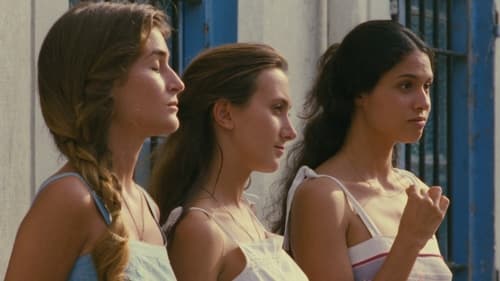
Editor
1967. En la Goulette, una pequeña ciudad portuaria tunecina, conviven en perfecta armonía distintos grupos étnicos. Yousseí, el musulmán, Jojo, el judío tunecino, y Giuseppe, el siciliano católico, eran tan inseparables como sus tres hijas de 16 años. En una especie de conspiración adolescente, las tres chicas deciden perder su virginidad el 15 de Agosto, el día de la Virgen. Lo malo es que se fijan en chicos de distinta religión, lo que supone violar un tabú. Todo ello ocurre en vísperas de la guerra de los Seis Días, contienda que enfrentará para siempre a judíos y musulmanes.

Editor
El film relata los sucesos de 1967 y reconstruye sobre todo los últimos veinte días del revolucionario en Bolivia, el cerco tendido sobre el Che por el ejército y su asesinato en la pequeña escuela de La Higuera.A cada uno de los fragmentos, leídos en un tono marcadamente desapasionado, corresponde un pequeño tramo de imagen-sonido de la naturaleza de los sitios correspondientes y en ocasiones pequeñas entrevistas a lugareños que conocieron al guerrillero, sobrevivientes de su tropa o soldados que lo combatieron. La figura de Guevara que aparece en la narración no solo está despojada de cualquier viso hagiográfico, sino que es evidente -dados los fragmentos seleccionados en el diario- el trabajo del realizador para que aflore el simple ser humano a través de apuntes en los que la meditación apunta a la enfermedad (el asma), la edad o la muerte del más cercano colaborador.

Director
During the Gulf War, Serge Daney had written that the conversation, according to him "a typically Franco-Arab art", could no longer be established between him and his Arab friends. Saddened by this observation, we wanted to offer him a frame, both real and cinematographic, in which he could renew a dialogue that was interrupted at that moment. The choice of his interlocutor was immediately obvious: Elias Sanbar, Palestinian, historian, director of the magazine "Palestinian Studies", collector of images: an exile who archives the memory of his people: press photographs, album of family, postcards, etc. For Sanbar, the image is a proof of his identity. Daney spent most of his life watching movies, but has always refused to keep still images. On both sides, there was a very strong desire to confront these two attitudes in the face of the image and to make it, in a way, a parable of the North-South relations.

Editor
The time is the 1930s and two Soviet spies (both Frenchmen by nationality) have been helping Communist factions during the Civil War in Spain. It is the time of Stalin's iron rule in the USSR, and the two agents are suddenly called to Moscow by the KGB. Knowing that they are in trouble for no fault of their own, fear drives one of them to suicide while the other gets his lover and her child and begins a run for his life, knowing that the KGB will never let him go free.

Editor
June 10, 1968. After the end of a long strike in the Wonder factory in Saint-Ouen (France), a female worker is dissatisfied with the negotiated compromise and refuses to return to work. Originally, it was a scene of Willemont's Sauve qui peut Trotsky, but the film was never completed.



